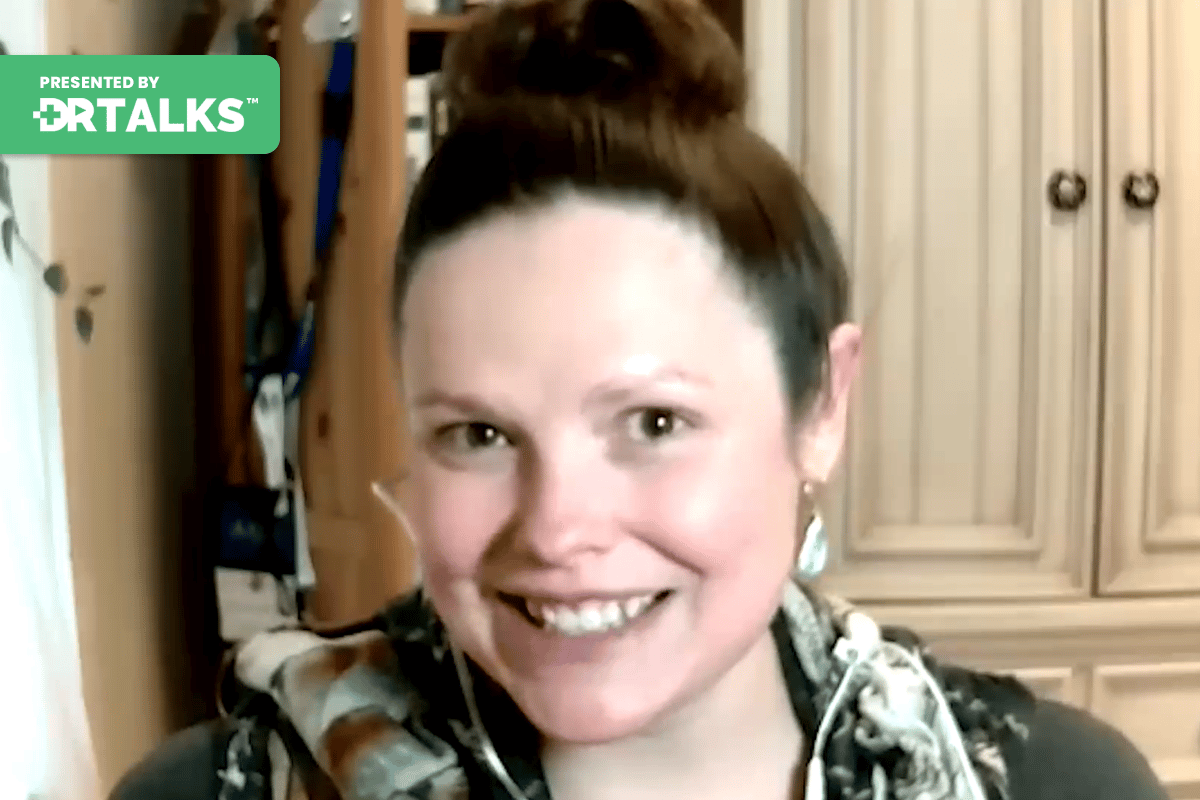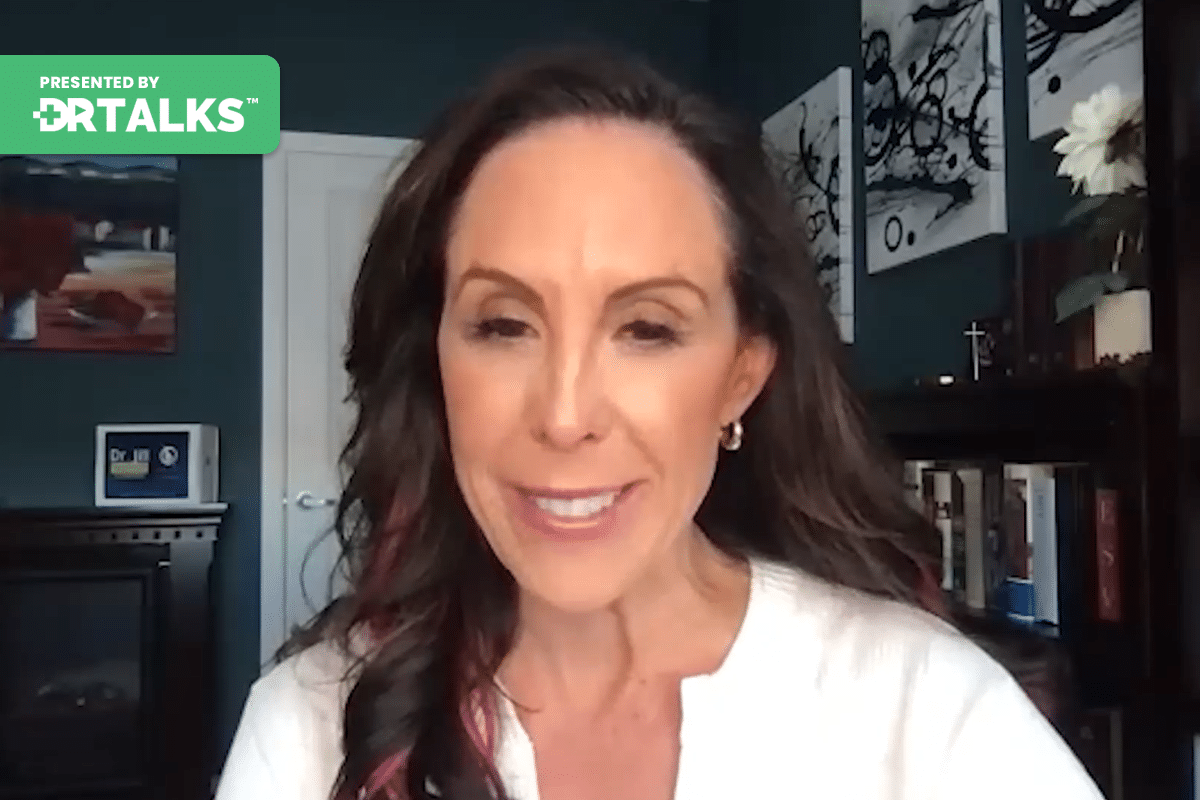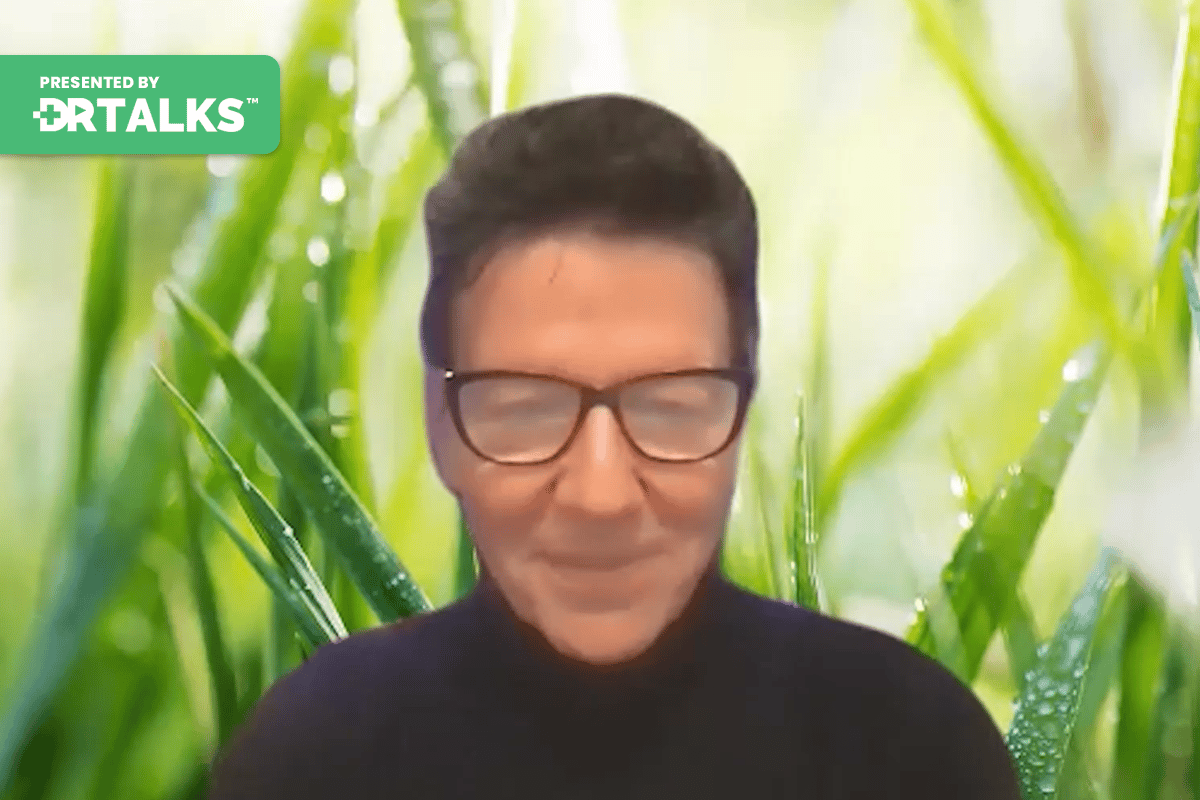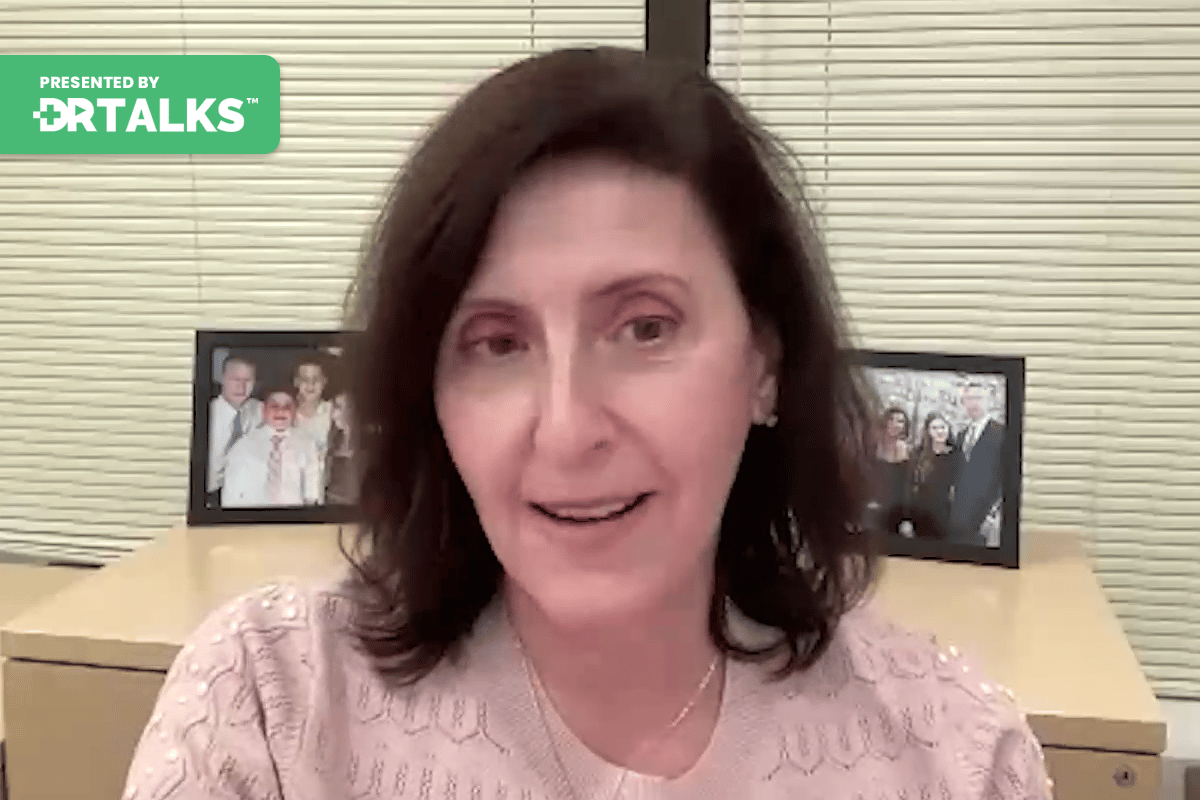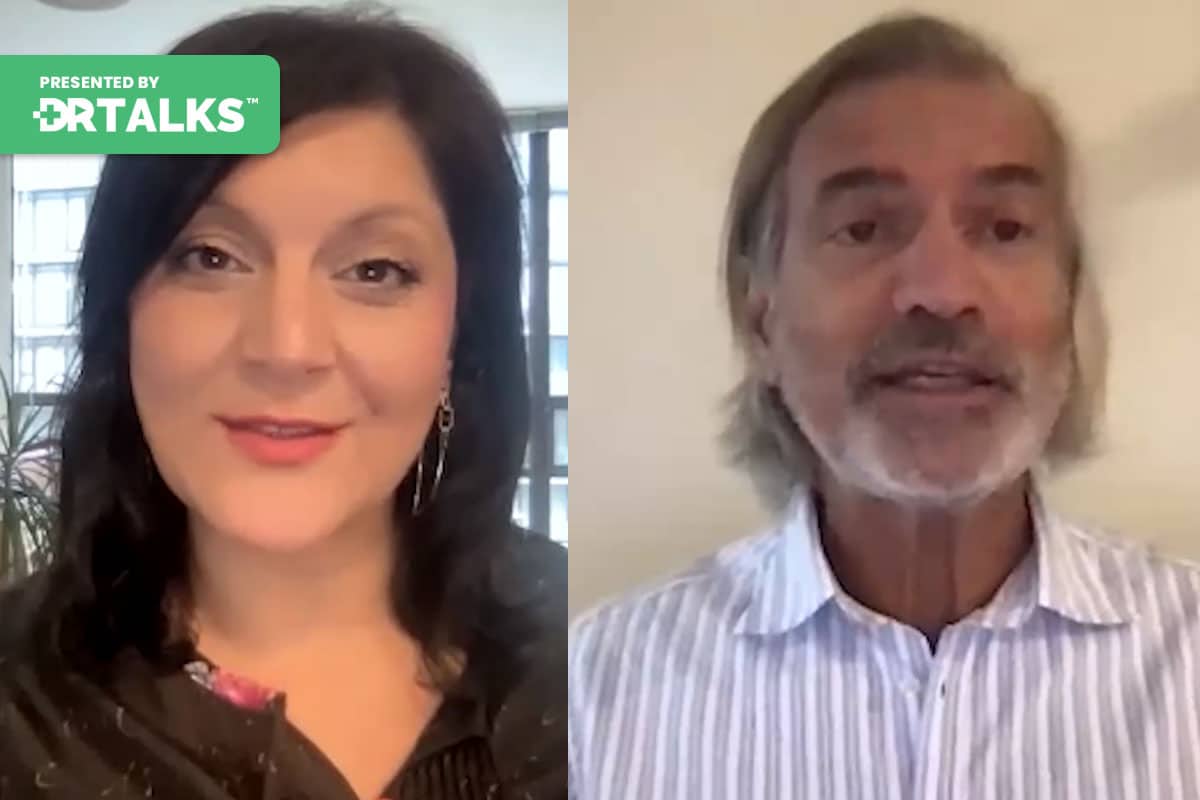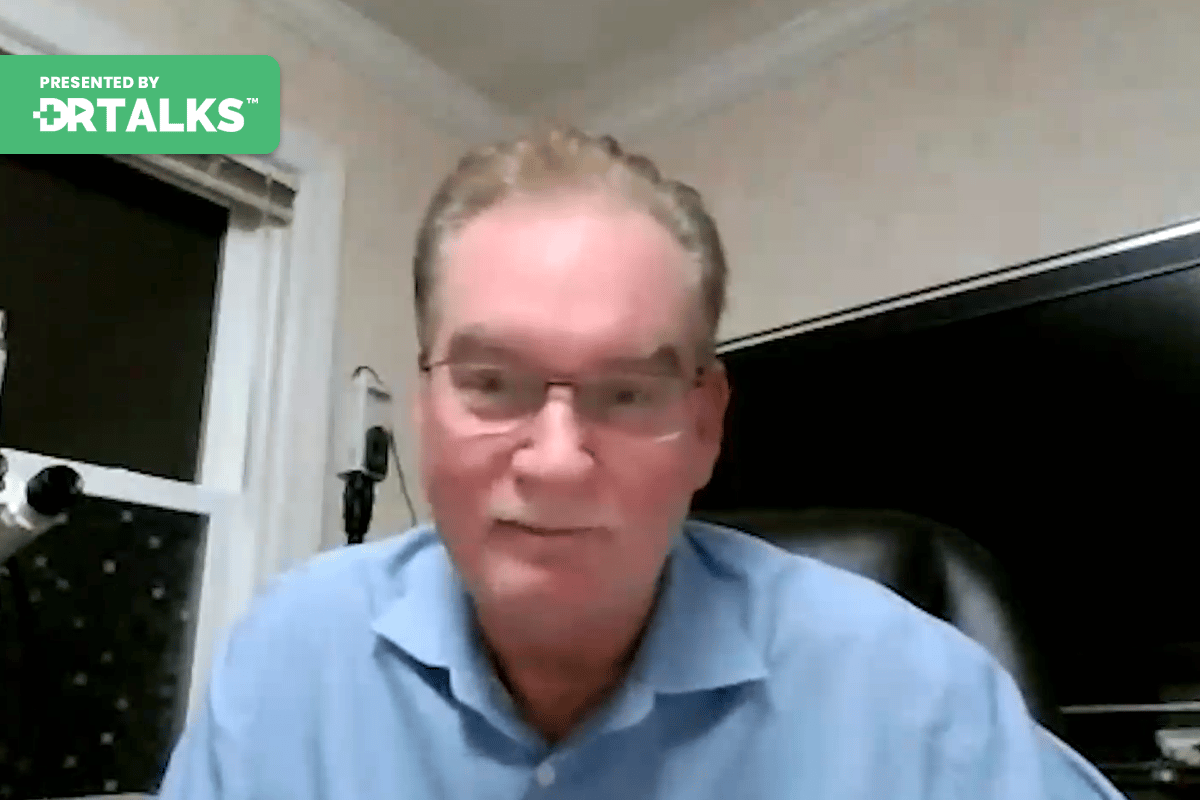Join the discussion below

Nafysa Parpia, ND has an independent practice at Gordon Medical associates, specializing in the treatment of Lyme disease and other complex chronic illnesses such as autoimmunity, mold toxicity, fibromyalgia, environmental toxicity and gastrointestinal disorders. Her patients with chronic Lyme Disease are typically those who either do not do well with antibiotics, or prefer... Read More

Lauren Tessier, ND, is a practicing Naturopathic Physician licensed by the state of Vermont. Her practice Life After Mold in Waterbury, Vermont is the East Coast’s only formerly certified, CIRS-literate Naturopathic practice. Life After Mold services patients suffering from multi-symptom, multi system illness, complicated by co-morbid conditions such as MCS,... Read More
- How COVID lays the foundation for mold infections
- How long haul and mold illness overlap
- Correlation of herpes family of viruses and COVID
Nafysa Parpia, ND
Welcome to this episode of the long haul chronic fatigue summit. I’m so happy to have with me, my friend and colleague Dr. Lauren Tessier. Welcome Dr. Lauren,
Lauren Tessier, ND
Thank you for having me, I’m so excited to be here.
Nafysa Parpia, ND
Thank you for being here. So, Lauren, how do you introduce yourself to our audience before we dive right in?
Lauren Tessier, ND
Sure. So I’m Lauren Tessier, I’m a licensed naturopathic division located in the state with beautiful water barre Vermont. Here I have a practice that specializes in all things mold related illness. I work with people um medically other in office or also from kind of a holistic educational wellness consult. I’ve been doing the mold thing for just about 10 years now. I have been serve certified circa 2016 and from there I really moved on and expanded my practice to include all the different aspects of mold and mold-related illness. So, I served people from all around the world now, I can’t say that. And it’s just been an absolute honor. Also I am affiliated with an international nonprofit S. C. U. R. Which is I. C. I, the International Society for Environmental terry acquired illness. It’s a mouthful, but it’s a wonderful organization and there I currently serve as vice president, former president and numerous other positions before. But it’s such a wonderful organization and that’s where we teach all different practitioners of all walks of life, how to do the thing we do environmentally acquired illness. So that’s me in a nutshell. I would say
Nafysa Parpia, ND
Fantastic. So today we’re gonna be talking about the possible trifecta between the herpes virus family, C0V!D and mold. Let’s start by telling the audience what mycotoxins are.
Lauren Tessier, ND
Sure, sure. So I like getting this kind of out of the way in the beginning because it’s really semantically, but because there’s so many issues with mold and mycotoxins and so many naysayers out there, open it that way, we really need to be clean with our Burbage. So mold is kind of what I loosely referred to as the fungal kingdom, which includes mold and yeast. And these are the little living organisms that are fungi. Now, these are from everywhere in all different climates. They thrive in dampness and it’s really dependent on how much dampness each one needs. And they also need organic material, which would be dust, dirt, standard debris, anything that they can kind of chew off of and live and thrive and grow. These particular, I’ll say molds and I am using that word loosely, these fungi also, you know, just like us, they make lots of different things in their little bodies. And one of these things are mycotoxins and mycotoxins are what we call secondary metabolites. They are super tiny little defensive molecules that get into the body easily and they are very difficult to get out of the body. And so what you’ll see a lot of times, people who are exposed to water damaged buildings are not only exposed to the mold, the living organism but also what that organism makes, which is the mycotoxins.
Nafysa Parpia, ND
Thank you for the explanation. You know, a lot of people think the mycotoxin themselves are the molds and then they want to try and kill the mycotoxins. But it doesn’t work that way because the mycotoxins are byproducts of the mold kind of like waste products if you will to subdue the immune system. So with that let’s go straight into the possible trifecta between her family C0V!D and and mold and mycotoxins.
Lauren Tessier, ND
So I’m sure, so this is something that has I think that you’ve seen clinically and I’m sure quite a few other folks in the environmentally acquired illness field have also seen. And what we see is that molds in general and specifically mycotoxins have this really funky way of suppressing the immune system. And the human herpes viruses are one of the few viruses that truly go latent. And so what we see in these conditions is that oftentimes they’ll be this reactivation of some of these human herpes family viruses. And you know, some people here have herpes and they think, you know, cold sores, genital HSV one and two but includes Virus CMB HB six. You know, the list goes really on, I’m sure far more than I know. So clinically we see this now, we see that reactivation with mold and mycotoxins from the flip side if you go into the literature you go into the data, you’re actually seeing something very similar from C0V!D because C0V!D does have the ability to suppress c it means a simple short term and long term. Right? And so you’re seeing this all these studies that really show the correlation of human herpes family viruses kind of blooming after that whole footprint of C0V!D comes along. So you know, it’s not just something that we’re seeing in the clinical setting but we actually have a little bit of data from the mold mycotoxin world with regards to some of these human herpes family viruses things like aflatoxin.
There’s been studies that show that aflatoxin widely found in lots of food will drive up Epstein Barr virus fighters and will push Epstein Barr virus into the little phase. We also see in these next two are an animal studies and I think these are pretty interesting gliotoxin in T2. These are both mycotoxins. Also T. Two is in this trike Augustine group that is often associated with you know like toxic black mold picture. And in particular some of these research studies showed that mice who were exposed to the human herpes virus or the herpes virus who are also exposed to their immune system got suppressed. So much so that the immune, the herpes virus was allowed to bloom in their nervous system essentially going moment, which means you know they passed, they essentially passed because of the immune system suppression the herpes infection getting out of hand.
Similarly we have seen in other studies that are looking at our T cell subsets the sales part of the immune system and we can prime them we can show them a virus and say okay go get that virus. And so in this study they took t cells, they showed them the mv cytomegalovirus and then they expose them to gliotoxin which is something made by a lot of common indoor molds, a lot of infective moles and even stuff that’s found in our biofilms. And what they found is that when these cells were exposed to gliotoxin they didn’t do their job with CMV, they failed to respond defensively to the CMV virus kicking around in the body. And so you know, the whole concept of mold suppresses the immune system and you know, we see these human herpes viruses kind of bloom when someone’s mold exposed or C0V!D exposed, like we have some interesting data to support it. So it’s not just kind of case studies and word amount that we’re seeing there.
Nafysa Parpia, ND
I love that you’ve done such a deep dive into the data Dr. Lauren because you’re right, it’s what we see in practice all the time. People who have mycotoxin illness that means they’re ill from the toxins from mold have a high viral load is particularly the herpes viruses. Epstein barr virus cytomegalovirus. So I’m just so happy that you’ve done this dive into the research and now you’re bringing it to the audience because what they’re seeing they can correlate it with the data and you will be sharing that data with everybody as well. So it’s I mean it’s it’s a real it’s just really a big deal to be able to see this on the data now. So thank you.
Lauren Tessier, ND
Yeah it’s a pleasure. And I will say you know correlation is not causation and we always have to be careful about that. But you know it’s always so that I get tickled when I see stuff in the data that you know tracks like how can you not. So anyway.
Nafysa Parpia, ND
Yeah I do. Yes, my hypothesis is confirmed.
Lauren Tessier, ND
No biases.
Nafysa Parpia, ND
Exactly. Exactly. So talk about how C0V!D lays the foundation for mold infections and we’re gonna talk about vice versa because they’ve got this synergistic effect on each other. So start start with how C0V!D
Lauren Tessier, ND
And so maybe before we go into that, what I will say, but there’s a lot of thoughts and concerns about what has happened with general mold and mycotoxins exposures during the pandemic. Right? So people went from being either at home or at work and then they went to most of most people fully at home can’t leave their house can’t go for walks, can’t do X. Y. Z. Really big limitations to the point that they are living inside their box, so to speak. Now. 50% of homes in the United States other either have a current or a historic issue with water damage. So people could have potentially gone, you know out of the frying pan and into the fire where only before they were maybe getting 10 hours max at home with eight hours sleep, a couple of hours commute, that kind of thing.
But now these people are home around the clock and so you know, is it because that it was really just mold exposure and sick building kind of picture that laid this foundation. Was it the fact that these things kind of placed fertile soil for C0V!D to then come in and wreak havoc. You know, it’s just something that we like calling out in the environmentally acquired illness field. So I wanted to throw that out there that says kind of a primer before we go into how C0V!D specifically lays the foundation for molding mycotoxins because or for mold infections and mycotoxin issues. C0V!D the pandemic itself, like I said, increased exposure to people. So much so that we have seen that a certain subset of fungal infection called newco psychosis was increased by about twofold from before the pandemic to during the pandemic. Research is also saying that they spoke because the way they were locked down, they also had a 2 to 3 fold exposure from being essentially around a higher rate of boards because of their lifestyle change. So we see that track a little bit. So rather than the virus itself laying that foundation is the circumstances of what happened with the pandemic laying that foundation. So now that I have that, I really wanted to drive that home for folks, I would love to chat a little bit about how C0V!D the virus particularly changes and alters the biochemistry and all that kind of good stuff to, you know, allow mold to get a foothold if you don’t mind. I’d love to jump in on that right now.
So, in different parts of the research, we see things popping up where C0V!D is actually shifting our microbiota are flora causing and perpetuating dysbiosis. So not only are we thinking, you know, dysbiosis in the gut, which we do see, we see a movement from kind of a really nice diversity towards an increase in pathogenic organisms including pathogenic fungi, But dysbiosis doesn’t stop in the gut, like best language that we have for the gut will be used with the gut. But we have those biofilms from head to toe, right in every single system and we have it in our lungs, we have it, you know, and everywhere on our skin, topically eyeballs, you name it. So the other place that we really see this dysbiosis shift that C0V!D lays the foundation for is in the lungs. And we found that folks who have an active C0V!D infection or historical kind of infection with C0V!D, they have increasing accounts of candida in their lungs. And you know we naturally have this stuff kicking around. We all have a little bit of candida. We all have a little bit of kata story in our bio phone.
But what they found is people with C0V!D have an exceptional amount of candida in the lungs and along with that comes a decrease in fungal diversity. So you’re getting Candida just kind of blooming unchecked without any of the fun guy there or any of the good bacterias and things like that to limit that can be to growth. And it just so happens that Candida has one of those three major fungal infections that kind of run along with C0V!D. So that’s kind of the dysbiosis. There is another interesting part that I really love. And I would love people to find out more about this called nutritional immunity where if you block a nutrient access to a nutrient you can change how the body interact with whatever pathogen foreign invader is coming in And with C0V!D, that magic nutritional immunity molecule is iron. Right, so what ends up happening with C0V!D is that its spikes inflammation. Right. We all know the concept of like cytokines storm there now. Corralling it more like hyper inflammation makes sense. But what we see is C0V!D inflammation. Spike Harrison Harrison’s our storage molecule for iron, right? But we also call it an acute phase reactant. So when stuff goes haywire and sideways in the body we can spy car Harrison to say ah there’s a fire like we need to put it out. But when we get that Harrison spike, we also liberate free iron and that free iron floats around in the body for the fun guy to come in and chew up and its irons powerhouse for a lot of different fungi, including two of the three that are commonly found as co infections. For C0V!D. Another kind of little interesting way that we get that Sheraton picture is that with C0V!D, you know everyone everyone knows it impacts the lungs and with that lung issue we also get a shift in our gas exchange and our balance of oxygen and carbon dioxide. And so with C0V!D we have an increased amount of C. O. C. We call it partial pressure of CO. Two in the blood. And when we do that we make the blood more acidic. We dropped the ph when that happens, Harrison just let’s go apologize. Iron picks it out into the circulation which is yet another way that soviet is giving more nutrients essentially to the fungi that might be blooming inside the body. So that’s kind of the two there. I can keep going on this very very exciting right.
Nafysa Parpia, ND
Especially both pieces. But this ferret in part we’ve seen that line. All infections do have this tendency to kick up the ferret in. But I have to say in this pandemic I’ve seen people’s Farrington and their iron iron and T. I. B. C. Higher than with any other infection. So this is what I’m seeing clinically. It’s correlating to what you’re talking about that you’ve seen in the literature and probably in your practice as well. I mean why is happening more with C0V!D than with other infections? I want to know like I haven’t seen such altered iron studies in people before this pandemic. You know. Yeah it happens with all infections but this is something else.
Lauren Tessier, ND
I agree, I agree. And then we also have to keep in mind right that we can get that spike. But then at some point the iron gets chewed up the drop and then you get people going into this like chronic disease picture where like it’s just the bottom flat lining with their iron. You know and it’s yeah
Nafysa Parpia, ND
They get under oxidative stress because iron too much iron in the body causes that. So now they’re in oxidative stress and then they brought them out into anemia. But that oxidative stress I believe still remains again I don’t think there’s papers on that but that’s my hypothesis.
Lauren Tessier, ND
You can spend I think everyone here gets that you could spend years in the literature
Nafysa Parpia, ND
And I’m just so you have spend some time in literature with respect to mold and C0V!D because it’s a big deal, especially this iron thing. I see it.
Lauren Tessier, ND
There’s another interesting one that I really wanted to make the time for us here and this has to do with putting more entryways onto cell for fungal infections. And this one like rocks my world. And so there’s again, one of the three major infections like referencing in here is psychosis, in Siembida, sand beetle infections and tuberculosis. And so this next one is really specific to the new court psychosis. And this one I like. It’s just so interesting. So we have our nasal epithelium are natural like new cultural tissue that runs from our necks, nose, sinuses, posterior throat, down to the gut, all the way out the other end. It’s all kind of connected. But we have kind of slightly different cells in different places. The ones that are in our nose here are different from our lungs and from our gut, but the ones I want to talk about here are the ones in the notes in particular when C0V!D gets into the system.
What they do is they bump into these cells or they infect these cells and as a result these cells put out a receptor and I tell people think about receptor as you know, a baseball mitt or a softball mitt, it’s ready to kind of accept the ball and catch the ball. So when C0V!D infects some of these respiratory cells in the sinuses, They the cells automatically put out this little receptor that’s called like GRP 78 doesn’t matter. It’s just a concept that they put out a catcher Smith and what happens with this one particular family of mold of psychosis. These forge in particular come in and they have a little proteins are blocking my leg. There’s a little protein on their surface called like an invasive and this perfectly goes locking key with ourselves in our sinuses. And when that happens, the respiratory cell essentially opens up and lets the star on in.
So there’s this amazing locking key that happens as a result of C0V!D infections that allows for more stores to get into the cells which like blew my mind. Yeah. Yeah. And here’s the flip side. This is even even more as far as I’m concerned. When there is a like these receptors exist I believe on these cells as is but as there’s kind of a bigger influx of C0V!D virus and more replication we start putting more and more of these catcher’s mitt out on these cells which allow for this whole more binding to happen. But this catcher’s mitt also interact with spike proteins and interact with the C0V!D receptor itself. Ace two and these guys kind of all come together and they make a whole another entrance into the cell for C0V!D. So not only are they bringing in stores into the south but they’re up regulating doorways into the south for more C0V!D to come in. So it’s a really interesting dynamic there and it just blew my mind that you know three things come together to make an additional doorway into the south.
Nafysa Parpia, ND
Wow this is yeah this is a big wow moment. Right? Absolutely. Thank you for that.
Lauren Tessier, ND
Yeah you’re welcome and I’m sorry to share it and I’m also
Nafysa Parpia, ND
In the literature.
Lauren Tessier, ND
Yeah. Yeah and I would love to see it validated in quite a few different places but it was one of those like Aha Moment kind of thing. So you know and along with all of this the other issue like I said is immune system suppression with C0V!D. Like we know that there particularly when it comes to mold infected cells have a really C0V!D infected cells have a big difficulty with identifying Candida. They have a big difficulty with sending out their warning signals that Candida is nearby and then on top of it they have trouble making these receptors. H. L. A receptors on their surface that helps to bind Candida and typically where we see this model is in people who have immuno compromised status and they’re developing sepsis from Candida. So C0V!D is just it’s not gonna out of the park when it comes to me from ecosystem candida. So you know it also is welcoming towards but not in such specific ways as it is for the psychosis and [inaudible]
Nafysa Parpia, ND
Well so truly when people have a mold infection or I’m gonna say exposure to mold or they’ve got a high mycotoxin load it’s easier for C0V!D to enter and vice versa. So you’re seeing this in the literature and I mean this is massive because it is what we suspected it is what we’ve seen clinically and now there’s proof to show this is actually happening. So if patients are wondering why they might have long C0V!D, it’s not only that the virus has come and gone but that it’s also allowed the mold to thrive. That mold thrives, it creates more mycotoxins. Those mycotoxins create more inflammation, they subdue the immune response even more. And then we’re welcome. And our immune system is welcoming in further infections, more herpes viruses because the immune system is so subdued that it can’t protect itself from further exposures.
Lauren Tessier, ND
Right right way to like put it beautifully put a ribbon on it for me. You know because we we do see that, we do see mold and mycotoxins from the flipside. Impacting the ability for C0V!D to come in and again like he said we have our suppression of all of our things that are really important for fighting infections. So we have our T rex down our neutrophils down R. C. T. Fours are macrophages are monitored sites are suppressed with mold mycotoxins from you know other an infection or which are breathing in the air setting the foundation for C0V!D. One of the other things that I want to throw in here It’s just the physical nature of damaged tissue. This is really underscored in the literature when it comes to you know how how molded mycotoxins can really impact C0V!D getting in to the body. And what we know is that when you inflame a tissue you create debris, cell debris and if there’s already mold kicking around there and then you have little mold vibrant particles. You like I said bring in the immune to themselves swelling all this kind of stuff. And so what happens in the lung is we just have a swamp of cruddy filling up our tiny little air pockets where all our oxygen exchange happens. So in a lot of these people you have a big oxygen drop hypoxia which creates more inflammation and when we do that we we we damage our our tissues so they’re not as stuck together and they’re not as tight and when that happens we can cause allergic reactions we can increase the rate of C0V!D into the bloodstream goes the stomach.
You know there’s it really underscores the concept that having a swamp in your lungs with no oxygen is really going to allow C0V!D to to get a foothold there. And you know, we also see in some of these cases that when people are mycotoxin exposed in particular, there’s a study that says that gliotoxin prevents the immune system from kicking up the intruder once it kind of gets into the body and showing it to the rest of the immune system that’s called antigens presentation. And so we see that totally suppressing something like gliotoxin and gliotoxin is produced by aspergillus schema goddess as gillis, ***, aspergillus Davis and all of these exist in the indoor built environment. Not all produce some mycotoxin, but it’s still something to consider that glia toxin can just kind of slammed the door on that identification of that foreign invader just right off the bat. So it’s a very twisted kind of web between the two of these that gets woven where they press one another for invasion into the body.
Nafysa Parpia, ND
And so I want to bring it back to what you were saying earlier on. We were all in this pandemic, we were in our homes where there is likely for for for a lot of patients who have long haul and we see this mold in, in in in C0V!D interaction, shall we say clinically there could there could have been mold in their home or there could have been even just a little bit in their home, but maybe they’re allergic to it. And so they have a heightened immune response. But then someone else does. So they’re stuck at home. They have some mold in the house. They get C0V!D and now we have this interaction of the C0V!D and the mold and other viruses and it all perpetuates into further inflammation and immune dysregulation. Yeah.
Lauren Tessier, ND
And we see the not only just are they laying the foundation there, but they look a lot alike too. Right? You’ve seen this, right?
Nafysa Parpia, ND
Mm hmm. They look a lot of like with regards to the inflammation then causing genetic expression, right? And that’s why it looks different for each person. Really?
Lauren Tessier, ND
Yeah, it’s genetics always play an interesting role there. And whether it’s inflammation genetics or detox genetics and you know, like you can get as, oh my gosh, the rabbit hole on snip. It’s huge on that front. And we’re only just starting to kind of like scrape away the surface there. But yeah, they do C0V!D and mold and mycotoxins, they look so much alike. And as more and more time passes with C0V!D, they’re really starting to classify it as inflammation of the blood vessels is what they’re thinking of. Like it is inflammation of the whole system. But guess what runs through the whole system, your blood vessels. And that’s why supposedly we’re seeing all these robotic issues and you know, so the thing is though to mold mycotoxins go systemic and hit all these organ systems the way C0V!D does. And that’s also why we see that it’s so many different systems too.
So people will come in. I remember when they were first listing off a lot of the symptoms for C0V!D back in 2020 like this looks like mold certainly certainly sounds like mold and chronic fatigue and kind of, you know, everything else that we navigate. But you know where I think their overlap really sticks out and please hop in and share more. I find that their biggest overlap happens in the brain, in the systemic circulation in the lungs and in the immune system. Those are kind of like my big four. Yeah, I don’t. I don’t see too much digestive overlap or endocrine overlap. You might, I certainly think that you see quite a few more C0V!D cases, long haul cases than I
Nafysa Parpia, ND
Do as well as everything you’ve discussed. Now I want to give them some hope.
Lauren Tessier, ND
Yes,
Nafysa Parpia, ND
Now they might be like what I have mold, I have Epstein Barr virus, I have cytomegalovirus, you know, I didn’t even actually didn’t even think about mold because I don’t see any more in my house. So how could this be. So first of all I want you to know that mold indoor, indoor molds are very, very common. Not everyone is gonna be super susceptible to them. Our patients are people with long haul tend to be, that’s that’s what we’re seeing and I’m just so happy that dr Lauren has actually found this deep to find this in the literature but I wanna now talk to the place a couple of places where we can infuse hope because it’s there. So tell them about how you might record this take, this could take a long time, it could take a year, it could take longer to treat the case because there’s so many variables. So many overlapping infections, immune dysregulation now. But start Lauren, tell them, tell them how you start.
Lauren Tessier, ND
Yeah, I start by cleaning house and start by cleaning house, you know it’s like before you sit down and study sometimes you have the urge to clean up around you so you don’t get distracted for a show, that’s my case. And I think of that as you know like detoxification and we’ve talked about this numerous times before and for any of you who haven’t had the opportunity to check out the chronic illness and mycotoxin summit that Dr. Padilla and Dr. Gordon have put on in years prior, I highly encourage you to check those out wealth of information. But the detox is really something that I find cleans up a lot of stuff. Sure it cleans up mycotoxin issues but it’s gonna clean up like organic solvent toxins and all of these other things that could also be causing the immune system destruction. Unbeknownst to us, you know I have my blinders on when I’m thinking mold mycotoxins, but a lot of the interventions I do is cleaning people up is going to hit so many other things and I don’t, it’s very difficult to bring the immune system back into balance and to fight infections when there’s still crab sticking around. So what I encourage people to do first is to really a get out of exposure or minimize exposure.
And then the second thing that we do and you do this to I know this is working usually like a previous talks approach for people, especially super sensitive folks where like you might have to deal with guts first and you might have to deal with mast cell first and all these different things and then actually do the pre detox work, you can move into some of that detox work and then that should take so much off your plate, it’s like turning down the background noise and the chatter on the immune system and so after that then you can go in, you can start to maybe work on any co infections or any killing that you have to do because now the body can clear out that degree to that comes along with it. And then after that is usually when I move people into the immune system balancing kind of cherry on top picture. So, there is hope there is absolutely hope, but I encourage people go slow, move slow, you’re gonna get sick overnight. It’s okay to take your time and really find the handful of people or even if it’s just one or two, we’re really going to support you who really understand you or at least believe you and then just heck with everything else because those people are not only gonna be supportive in your recovery and just, you know, sharing of what you’re experiencing, but they’re also going to help regulate your fight or flight response. That’s going to help with recovery, going to allow you to feel safe. And that’s gonna lay such a huge foundations, for you to move forward. So, it is possible. And one of the best things that you can do is just have a little bit of happiness, love and laughter injected into your life because that I find is really I keep saying lays the foundation, but that’s a strong foothold in treatment for a lot of my clients.
Nafysa Parpia, ND
Thank you so much. I just want to thank you again, I probably did five times, but I have to again for going deep in the research on C0V!D and mold and other viruses because like I said, it’s what we see in practice and finally little editors there. So thank you,
Lauren Tessier, ND
I wouldn’t have it any other way and I’m thankful for you guys for having me back on. It means so much and I’m also thankful to all the researchers out there who are working tirelessly to bring this information forward because if it weren’t for them, you know, we would just have our clinical experience to share, which means something for sure. But you know, I have lots of people to think for sure. So thank you. I appreciate it.
Nafysa Parpia, ND
Thank you for being here.
Downloads

